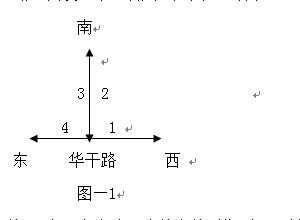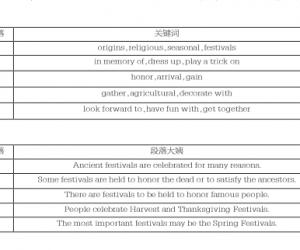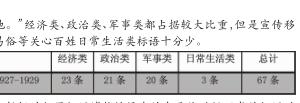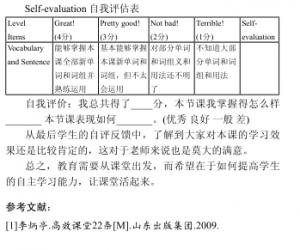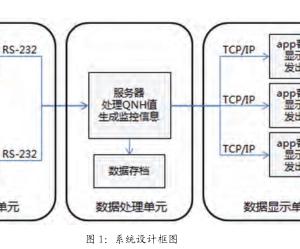On the Cultural Default in Literary Translation —A Case Study of Compensation…
收藏
打印
发给朋友
发布者:lunwenchina
热度0票 浏览112次
时间:2019年12月19日 09:55
杭州电子科技大学外国语学院/张婷婷
【Abstract】 Cultural default means the absence of relevantcultural background. This essay intends to address the issue fromthe underlying mechanism that explains the existence of thisphenomenon. To strengthen its communicative value, the essaythen continues to review several ways to treat cultural defaultas far as translation is called into question. The discussion leadsto the conclusion that the cultural turn in translation studiesbrings more essential factors into consideration as reflected intranslators’ decision-making process.
【Key words】 cultural default; literary translation;compensation; translator
Introduction
In recent years there has been an upsurge of interest intranslation studies as to how translation can be related to culture,especially in the attempts to redefine its nature from a newlight. Mary Snell Hornby “exhorts linguists to abandon their‘scientific’ attitude and to move from ‘text’ as a putative‘translation unit’, to culture- a momentous step that wouldgo far beyond the move from the word as a ‘unit’ to thetext” (Bassnett and Lefevere, 1990:4). The “cultural turn”
of translation studies then requires what is studied is the textembedded within its network of both source and target culturalsigns. Such a change certainly poses more obstacles to translatorsas Nida concludes that a text which only reflects the manyconcepts and literary canons of a particular isolated culture oftenincludes information which is extremely difficult to understandand to translate in a distinct language-culture (Nida, 2001:84).
I. the Nature of Cultural Default
The theory of schema attaches great importance to sharedbackground knowledge or pragmatic presupposition between thesender and receiver in the process of communication. For the sake ofeconomy and effectiveness, shared information is usually unsaid. Ifthe unsaid can be traced within the text, it is named the “contextualdefault” . If the unsaid is culture-specific, it is “culture default”
that hampers the understanding of receivers from an alien culture.
As stressed all along, language does not function in isolation; itfunctions in actual situation of use. It is such a situation that activatesthe receiver’s memory which in turn manages to fill in the situationslots and smooth over the communication between the sender and thereceiver(王东风, 1997). To guarantee the fulfillment of this specificcommunication process, both parts should give a full play of sharedbackground knowledge or pragmatic presumption.
II. Cultural Default Reconstructed in Literary Translation: AParadox at Play
Reading is a conversation process in which two partners(author/reader) open themselves up to each other, both“falling” into the dynamics of exchange. When authors andsource readers work together to carry out the interaction smoothly,translators toil over the treatment of cultural defaults in the sourcetext. What is naturally agreed between the authors and sourcereaders seems to be a stumbling block for target readers withoutthe work of translators. Translation involves the bringing into relationship of at least two sets of language rules, fore-structures,and cultural “prejudices” and so on, to forge a consensus ofmeaning. No one can doubt that the translation of a text, howevermuch the translator may have felt himself into his author, cannotbe simply the re-awakening of the original event in the mind ofthe writer, but a recreation of the text that is guided by the way thetranslator understands what is said in it (Gadamer,1975:346-47).
Here a paradox concerning the treatment of cultural defaultarises. To pave the pathway for target reader’s understanding,translators take advantage of different strategies to wellcompensate cultural defaults. As listed below, there are at leastfour ways to deal with the problem .
1. Intratextual Compensation: Paraphrase + AnnotationExample 1
檐前老树一株,浓阴覆窗,人面俱绿,隔案游人往来不绝,此吾父稼夫公垂帘宴客处也。 (Lin Yutang,2004:18-19)By the side of the eaves, there was an old tree which spreadits green shade over the window, and made the people’s faceslook green with it; and across the creek, you could see peoplepassing to and fro. This was where my father used to entertain hisguests inside the bamboo-framed curtains.①
①as there was no walls or lattices whatsoever round thepavilion; they used to hang down bamboo-framed curtains so thatthe dining party might not be seen by the people across the creek.
2. Intratextual Compensation: Paraphrase
Example 2
况锦衣玉食者未必能安于荆钗布裙也。 (ibid,134)Besides, one who is used to beautiful dresses and nice foodlike her will hardly be satisfied with the lot of a poor housewife.
3. Extratextual Compensation: Transliteration + AnnotationExample 3
余虽居长而行三,故上下呼芸为“三娘”;后忽呼为“三太太”。始面戏呼,继成习惯,甚至尊卑长幼皆以“三太太”呼之。 (ibid,124)
I was born the third son of my family, although the eldest;hence they used to call Yun “san niang” at home, but this waslater suddenly changed into “san t’ait’ai.” This bean at firstin fun, later became a general practice, an even relatives of allranks, high and low, addressed her as “san t’ait’ai” .①①“san” means “number three” . The meaning of“niang” and “t’ait’ai” varies with local usage, but generally“niang” refers to a young woman in a big household, while“t’ait’ai” suggests the mistress of an independent home.
4. Naturalization
Example 4
余笑曰:“卿非解人,摸索在有意无意间耳。拥而狂探,田舍郎之所为。” (ibid, 167) The beauty of caressinglies in doing it naturally and half unconsciously. Only a countrybumpkin will hug and caress a woman roughly.
Example 5
七月望,俗谓之鬼节。 (ibid, 28)
The fifteenth of the seventh moon was All Souls’ Day.
5. Literal Translation
其形削肩长颈,瘦不露骨,眉弯目秀,顾盼神飞,唯两齿微露,似非佳相。 (ibid, 17)
Of a slender figure, she had drooping shoulders and a ratherlong neck, slim but not to the point of being skinny. Her eyebrowswere arched and in her eyes there was a look of quick intelligenceand soft refinement. The only defect was that her two front teethwere slightly inclined forward, which was not a mark of good omen.
IV. Concluding Remarks
The five strategies to solve cultural defaults in C-E translationclearly demonstrate the translator’s linguistic and culturalcompetence. But there are a lot more to get out of his decisionmaking process, which will be further discussed in the third partof the essay. As far as compensation is concerned, a translator hasto consider how much should be compensated and to what extentshould compensation negotiates with the aesthetic principle of“leaving gaps” . On the one hand, he is to follow the four stepsproposed by Ingarden to reconstruct the source text by meansof gap-filling just like the five strategies listed above. Firstly, heshould be able to find out where the gaps lie in the source text;secondly, he is to pick up which gaps need filling in; thirdly, he hasto decide the degree of the gap-filling; fourthly, he will adopt themost appropriate way to preserve the aesthetic value of the work.
Actually, the required four steps are coped with on the textuallevel. On the other hand, there is every reason to believe thatunder a wider extralingual context, more issues should be takeninto consideration so as to restrict the translators’ freedom toreconstruct the source text. For instance, the cultural assumptionsor pre-judgment within the translator’s horizon already determinethe choice of materials, the particular way of approaching the taskas well as the success or failure of a translated text. Also somepractical problems as to whether the annotations shown in Example1 and Example 3 impact on the typographical design.
参考文献:
[1]Bassnett,Susan & Lefevere,Andre.Translation,History,andCulture[C].London:Pinter Publisher,1990.
[2]Brown,G & Yule,G.Discourse Analysis[M].London:CambridgeUniversity Press,1987.
[3]Gadamer,Hans Georg.Truth and Method[M].London:Sheed andWard,1975.
[4]Hatim,Basil & Mason,Ian.Discourse and The Translator[M].
Shanghai:Shanghai Foreign Language Education Press,2001.
[5]Iser,W.The Act of the reading:A Theory of AestheticResponse[M].Baltimore:the Johns Hopkins University Press,1978.
[6]Matlin,M.W.Cognition[M].New York:Holt,Rinehart andWinson,Inc,1989.
[7]Venuti,Lawrence.Rethinking Translation:Discourse,Subjectivity,Ideology[C].London:Routlege,1992.
[8]Yutang,Lin(tr.).Six Chapters of a Floating Life[Z].
Beijing:Foreign Language Teaching and Research Press,2004.
*本文为2015年浙江省教育厅科研项目资助《目的论视角下<红高粱>文化专有项英译研究》(Y201533664)阶段性成果。
作者简介:张婷婷(1982-),女,浙江临海人,杭州电子科技大学外国语学院,研究方向:翻译理论与实践。





